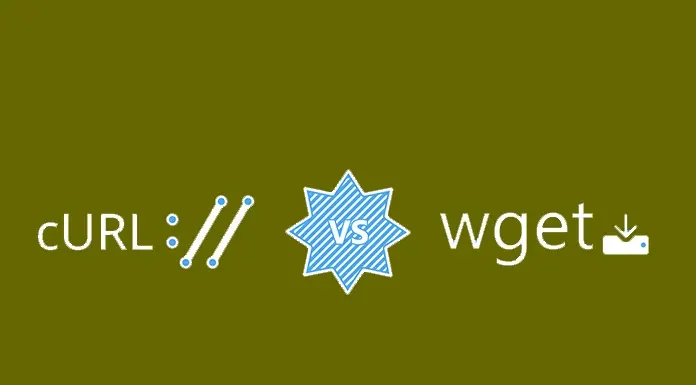Choosing between cURL and Wget can feel like picking the right wrench from a toolbox—both tighten bolts, but each shines in different situations. If you move files, probe APIs, or automate downloads, understanding the nuances between these two stalwarts will save time, reduce errors, and make your workflows pleasantly predictable.
At a Glance: The Core Difference
Think of Wget as a focused, steady hauler built to fetch files and entire sites non-interactively. It’s brilliant at background downloads, recursive retrievals, and resilient transfers with automatic retries. cURL, by contrast, is a Swiss Army knife for network requests. It speaks dozens of protocols, excels at HTTP(S) features, shines with APIs, and offers meticulous control over headers, authentication, and data payloads. If your task is “just download this file and keep going,” Wget is a friendly default. If your task is “craft a precise web request and inspect the response,” cURL is your best friend.
Feature-by-Feature Comparison
| Aspect | Wget | cURL | What It Means for You |
| Primary focus | Non-interactive file downloads, recursion | Flexible request/response control, APIs | Choose Wget for mirroring; pick cURL for fine-grained HTTP work |
| Protocols | HTTP, HTTPS, FTP | HTTP(S), FTP(S), SFTP, SCP, and more | cURL covers broader protocol needs |
| Recursion/site mirroring | Built-in (-r, -m) | Not native | Wget is the simpler site copier |
| Resuming downloads | Automatic with -c | Supported with -C – (HTTP) | Both handle interruptions well |
| Headers & auth control | Basic options | Extensive (-H, -d, –data, tokens) | cURL excels at API and auth |
| Output handling | Saves to file by default | Prints to stdout by default | cURL pipes beautifully into other tools |
Typical Use Cases and Workflows
Use Wget when you need dependable, unattended downloads. Backups, nightly fetches of static assets, or mirroring documentation sites are classic Wget jobs. Its retry logic, timestamping, and recursion reduce the need for glue scripts.
Use cURL when you need to talk to services rather than merely fetch from them. It lets you set custom headers, send JSON payloads, handle cookies with precision, and parse status codes—perfect for CI pipelines, health checks, and API tests. Because cURL writes to stdout by default, it integrates elegantly with jq, grep, or your favorite shell filters, turning raw responses into actionable data.
If your environment requires a proxy, both tools support it cleanly via flags or environment variables, keeping your traffic compliant with organizational policies while preserving speed and reliability.
Syntax Highlights You’ll Use Daily
cURL for a quick API GET with a header:
curl -s -H “Accept: application/json” https://api.example.com/status
cURL for POSTing JSON:
curl -s -X POST https://api.example.com/items \
-H “Content-Type: application/json” \
-d ‘{“name”:”report”,”priority”:”high”}’
Wget to download a single file to the current directory:
wget https://example.com/file.tar.gz
Wget to resume an interrupted download:
wget -c https://example.com/big.iso
Wget to mirror a site (respecting robots, converting links for local browsing):
wget –mirror –convert-links –adjust-extension –page-requisites –no-parent https://docs.example.com/
These examples underscore the philosophy: Wget emphasizes robust fetching; cURL emphasizes request craftsmanship.
Performance, Reliability, and Security Considerations
On flaky networks or large single-file transfers, Wget’s -c resume and built-in retry logic are a safety net. You can tune retries (–tries), timeouts (–timeout), and timestamping (-N) to avoid unnecessary re-downloads. For bulk batch jobs that must complete overnight without babysitting, this matters.
cURL’s performance edge appears in API-heavy contexts where precise control trims round-trips. You can follow redirects (-L), constrain connection reuse, or fail fast on errors (–fail-with-body). For security, both rely on your system’s CA store for TLS verification; keep it updated. Add –tlsv1.2 (or newer) if you need to enforce modern protocols. For authentication, cURL supports a wide range—from bearer tokens to client certificates—helping you implement least-privilege access without exposing secrets on the command line (environment variables and .netrc files are safer options).
How to Choose (and Combine) Them Wisely
- Prefer Wget for unattended, recursive, or one-shot file downloads where resilience and simplicity matter most.
- Prefer cURL for API calls, custom headers, granular auth, and when you’ll pipe responses to other tools.
- Combine them: use cURL to probe endpoints and validate headers, then hand off bulk fetching to Wget with a generated URL list.
One Practical Workflow You Can Reuse
Imagine you need to validate a set of links, ensure they return 200 OK, and then download them. First, use cURL in a script to check status codes quickly. Next, write the successful URLs to a file and feed that file to Wget for efficient, resumable downloading. This split keeps your logic clean: cURL handles HTTP nuance; Wget handles throughput and durability. It’s like scouting the route before sending in the trucks.
Quick Tips and Gotchas (Bookmark-Worthy)
- Use cURL’s -I (HEAD) to check headers fast before a heavy transfer.
- Avoid leaking secrets: prefer environment variables or .netrc for creds.
- On shared servers, throttle Wget with –limit-rate to be a good neighbor.
- For JSON, pair curl -s with jq to parse responses cleanly.
- Remember defaults: Wget saves to a file; cURL prints to stdout—redirect or pipe accordingly.
Also Read: Boosting Productivity And Security: Lockdown Devices For Business Purposes

